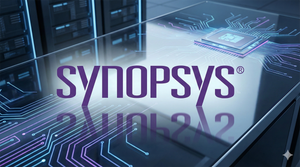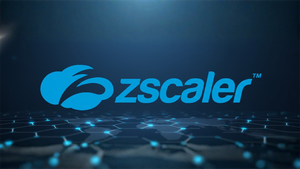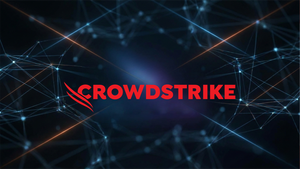bluebird bio, Inc. (NASDAQ: BLUE) (“bluebird bio”) today announced it has signed its first Medicaid outcomes-based agreement for LYFGENIA™ (lovotibeglogene autotemcel, also known as lovo-cel) with the state of Michigan. LYFGENIA is a one-time gene therapy approved for the treatment of patients 12 years of age and older with sickle cell disease and a history of vaso-occlusive events (VOEs). Approximately 50 percent of individuals living with sickle cell disease in the U.S. are insured by Medicaid.
“Our commercial approach is built on the principle that people with sickle cell disease insured through Medicaid deserve the same timely access to gene therapy as patients with other forms of insurance,” said Tom Klima, chief commercial & operating officer, bluebird bio. “We are extremely pleased to have reached this agreement with Michigan Medicaid and with the momentum behind our reimbursement negotiations across the board just months following approval, which underscores payers’ shared commitment to equitable access and understanding of the value that LYFGENIA can bring to people living with sickle cell disease, their caregivers, and the healthcare system.”
bluebird is an established leader in developing and implementing innovative, value-based contracting approaches. The Company has designed outcomes-based contract options unique to LYFGENIA that offer payers meaningful risk sharing tied to VOE-related hospitalizations—a claims-based metric that is directly correlated with clinical benefit and aligned with study endpoints in the LYFGENIA clinical development program—with patients followed for three years. bluebird’s outcomes-based contract offering for State Medicaid Agencies was designed with direct input from government payers to specifically address the challenges they face in adapting to provide access to one-time, transformative treatments, and reflects the Company’s unmatched experience delivering gene therapies in the commercial setting.
bluebird is in ongoing discussions with more than 15 Medicaid agencies representing 80 percent of Medicaid-insured individuals in the U.S. Additionally, bluebird has signed multiple outcomes-based agreements for LYFGENIA with national commercial payer organizations representing dozens of downstream plans and covering approximately 200 million U.S. lives.
bluebird is also engaged with the Center for Medicare and Medicaid Innovation (CMMI) on its Cell and Gene Therapy Access Demonstration Model, which is anticipated to start in 2025.
About LYFGENIA™ (lovotibeglogene autotemcel) or lovo-cel
LYFGENIA is a one-time ex-vivo lentiviral vector gene therapy approved for the treatment of patients 12 years of age or older with sickle cell disease and a history of vaso-occlusive events (VOEs). LYFGENIA works by adding a functional β-globin gene to patients’ own hematopoietic (blood) stem cells (HSCs). Durable production of adult hemoglobin with anti-sickling properties (HbAT87Q) is possible following successful engraftment. HbAT87Q has a similar oxygen-binding affinity to wild-type HbA, limits sickling of red blood cells and has the potential to reduce and VOEs.
The Phase 1/2 HGB-206 study of LYFGENIA is complete and the Phase 3 HGB-210 study evaluating LYFGENIA is ongoing. bluebird bio is also conducting a long-term safety and efficacy follow-up study (LTF-307) for patients with sickle cell disease who have been treated with LYFGENIA in bluebird bio-sponsored clinical studies.
Indication
LYFGENIA is indicated for the treatment of patients 12 years of age or older with sickle cell disease and a history of vaso-occlusive events (VOEs).
Limitations of Use
Following treatment with LYFGENIA, patients with α-thalassemia trait (-α3.7/-α3.7) may experience anemia with erythroid dysplasia that may require chronic red blood cell transfusions. LYFGENIA has not been studied in patients with more than two α-globin gene deletions.
Important Safety Information
Boxed WARNING: HEMATOLOGIC MALIGNANCY
Hematologic malignancy has occurred in patients treated with LYFGENIA. Monitor patients closely for evidence of malignancy through complete blood counts at least every 6 months and through integration site analysis at Months 6, 12, and as warranted.
Hematologic Malignancy
Hematologic malignancy has occurred in patients treated with LYFGENIA (Study 1, Group A). At the time of initial product approval, two patients treated with an earlier version of LYFGENIA using a different manufacturing process and transplant procedure (Study 1, Group A) developed acute myeloid leukemia (AML). One patient with α-thalassemia trait (Study 1, Group C) has been diagnosed with myelodysplastic syndrome (MDS).
The additional hematopoietic stress associated with mobilization, conditioning, and infusion of LYFGENIA, including the need to regenerate the hematopoietic system, may increase the risk of a hematologic malignancy. Patients with sickle cell disease have an increased risk of hematologic malignancy as compared to the general population.
Patients treated with LYFGENIA may develop hematologic malignancies and should have lifelong monitoring. Monitor for hematologic malignancies with a complete blood count (with differential) at least every 6 months for at least 15 years after treatment with LYFGENIA, and integration site analysis at Months 6, 12, and as warranted.
In the event that a malignancy occurs, contact bluebird bio at 1-833-999-6378 for reporting and to obtain instructions on collection of samples for testing.
Post-Marketing Long Term Follow-Up Study: Patients who intend to receive treatment with LYFGENIA are encouraged to enroll in the study, as available, to assess the long-term safety of LYFGENIA and the risk of malignancies occurring after treatment with LYFGENIA by calling bluebird bio at 1-833-999-6378. The study includes monitoring (at pre-specified intervals) for clonal expansion.
Delayed Platelet Engraftment
Delayed platelet engraftment has been observed with LYFGENIA. Bleeding risk is increased prior to platelet engraftment and may continue after engraftment in patients with prolonged thrombocytopenia. Two patients (4%) required more than 100 days post treatment with LYFGENIA to achieve platelet engraftment.
Patients should be made aware of the risk of bleeding until platelet recovery has been achieved. Monitor patients for thrombocytopenia and bleeding according to standard guidelines. Conduct frequent platelet counts until platelet engraftment and platelet recovery are achieved. Perform blood cell count determination and other appropriate testing whenever clinical symptoms suggestive of bleeding arise.
Neutrophil Engraftment Failure
There is a potential risk of neutrophil engraftment failure after treatment with LYFGENIA. Neutrophil engraftment failure is defined as failure to achieve three consecutive absolute neutrophil counts (ANC) ≥ 0.5 × 109 cells/L obtained on different days by Day 43 after infusion of LYFGENIA. Monitor neutrophil counts until engraftment has been achieved. If neutrophil engraftment failure occurs in a patient treated with LYFGENIA, provide rescue treatment with the back-up collection of CD34+ cells.
Insertional Oncogenesis
There is a potential risk of lentiviral vector-mediated insertional oncogenesis after treatment with LYFGENIA.
Hypersensitivity Reactions
Allergic reactions may occur with the infusion of LYFGENIA. The dimethyl sulfoxide (DMSO) or dextran 40 in LYFGENIA may cause hypersensitivity reactions, including anaphylaxis.
Anti-retroviral Use
Patients should not take prophylactic HIV anti-retroviral medications for at least one month prior to mobilization and until all cycles of apheresis are completed. There are some long-acting anti-retroviral medications that may require a longer duration of discontinuation for elimination of the medication. If a patient is taking anti-retrovirals for HIV prophylaxis, confirm a negative test for HIV before beginning mobilization and apheresis of CD34+ cells.
Hydroxyurea Use
Patients should not take hydroxyurea for at least 2 months prior to mobilization and until all cycles of apheresis are completed. If hydroxyurea is administered between mobilization and conditioning, discontinue 2 days prior to initiation of conditioning.
Iron Chelation
Drug-drug interactions between iron chelators and the mobilization process and myeloablative conditioning agent must be considered. Iron chelators should be discontinued at least 7 days prior to initiation of mobilization or conditioning. Do not administer myelosuppressive iron chelators (e.g., deferiprone) for 6 months post-treatment with LYFGENIA. Non-myelosuppressive iron chelation should be restarted no sooner than 3 months after LYFGENIA infusion. Phlebotomy can be used in lieu of iron chelation, when appropriate.
Interference with PCR-based Testing
Patients who have received LYFGENIA are likely to test positive by polymerase chain reaction (PCR) assays for HIV due to integrated BB305 LVV proviral DNA, resulting in a possible false-positive PCR assay test result for HIV. Therefore, patients who have received LYFGENIA should not be screened for HIV infection using a PCR-based assay.
Adverse Reactions
The most common adverse reactions ≥ Grade 3 (incidence ≥ 20%) were stomatitis, thrombocytopenia, neutropenia, febrile neutropenia, anemia, and leukopenia.
Three patients died during LYFGENIA clinical trials; one from sudden cardiac death due to underlying disease and two from acute myeloid leukemia who were treated with an earlier version of LYFGENIA using a different manufacturing process and transplant procedure (Study 1, Group A).
Pregnancy/Lactation
Advise patients of the risks associated with myeloablative conditioning agents, including on pregnancy and fertility.
LYFGENIA should not be administered to women who are pregnant, and pregnancy after LYFGENIA infusion should be discussed with the treating physician.
LYFGENIA is not recommended for women who are breastfeeding, and breastfeeding after LYFGENIA infusion should be discussed with the treating physician.
Females and Males of Reproductive Potential
A negative serum pregnancy test must be confirmed prior to the start of mobilization and re-confirmed prior to conditioning procedures and before LYFGENIA administration.
Women of childbearing potential and men capable of fathering a child should use an effective method of contraception (intra-uterine device or combination of hormonal and barrier contraception) from start of mobilization through at least 6 months after administration of LYFGENIA.
Advise patients of the options for fertility preservation.
Please see full Prescribing Information for LYFGENIA including Boxed WARNING and Medication Guide.
About bluebird bio, Inc.
bluebird bio is pursuing curative gene therapies to give patients and their families more bluebird days.
Founded in 2010, bluebird has been setting the standard for gene therapy for more than a decade—first as a scientific pioneer and now as a commercial leader. bluebird has an unrivaled track record in bringing the promise of gene therapy out of clinical studies and into the real-world setting, having secured FDA approvals for three therapies in under two years. Today, we are proving and scaling the commercial model for gene therapy and delivering innovative solutions for access to patients, providers, and payers.
With a dedicated focus on severe genetic diseases, bluebird has the largest and deepest ex-vivo gene therapy data set in the field, with industry-leading programs for sickle cell disease, β-thalassemia and cerebral adrenoleukodystrophy. We custom design each of our therapies to address the underlying cause of disease and have developed in-depth and effective analytical methods to understand the safety of our lentiviral vector technologies and drive the field of gene therapy forward.
bluebird continues to forge new paths as a standalone commercial gene therapy company, combining our real-world experience with a deep commitment to patient communities and a people-centric culture that attracts and grows a diverse flock of dedicated birds.
bluebird bio and LYFGENIA are registered trademarks of bluebird bio, Inc. All rights reserved.
Cautionary Statement Regarding Forward-Looking Statements
This press release contains “forward-looking statements” within the meaning of the Private Securities Litigation Reform Act of 1995. All statements that are not statements of historical facts are, or may be deemed to be, forward-looking statements, such as statements regarding the momentum around the Company’s launch of LYFGENIA and its ability to successfully partner with payers and CMMI. Such forward-looking statements are based on historical performance and current expectations and projections about bluebird’s future goals, plans and objectives and involve inherent risks, assumptions and uncertainties, including internal or external factors that could delay, divert or change any of them in the next several years, that are difficult to predict, may be beyond bluebird’s control and could cause bluebird’s future goals, plans and objectives to differ materially from those expressed in, or implied by, the statements. No forward-looking statement can be guaranteed. Forward-looking statements in this press release should be evaluated together with the many risks and uncertainties that affect bluebird bio’s business, particularly those identified in the risk factors discussion in bluebird bio’s Annual Report on Form 10-K for the year ended December 31, 2022, as updated by its subsequent Quarterly Reports on Form 10-Q, Current Reports on Form 8-K and other filings with the Securities and Exchange Commission. These risks and uncertainties include, but are not limited to: delays and challenges in bluebird’s commercialization and manufacturing of its products; the risk that the efficacy and safety results from bluebird’s prior and ongoing clinical trials will not continue or be seen in the commercial context; the risk that there is not sufficient patient demand or payer reimbursement to support continued commercialization of LYFGENIA; the risk of insertional oncogenic or other safety events associated with lentiviral vector, drug product, or myeloablation, including the risk of hematologic malignancy; and the risk that bluebird’s products, including LYFGENIA, will not be successfully commercialized. The forward-looking statements included in this document are made only as of the date of this document and except as otherwise required by applicable law, bluebird bio undertakes no obligation to publicly update or revise any forward-looking statement, whether as a result of new information, future events, changed circumstances or otherwise
View source version on businesswire.com: https://www.businesswire.com/news/home/20240311251950/en/
Contacts
Media:
Jess Rowlands, 857-299-6103
jess.rowlands@bluebirdbio.com





